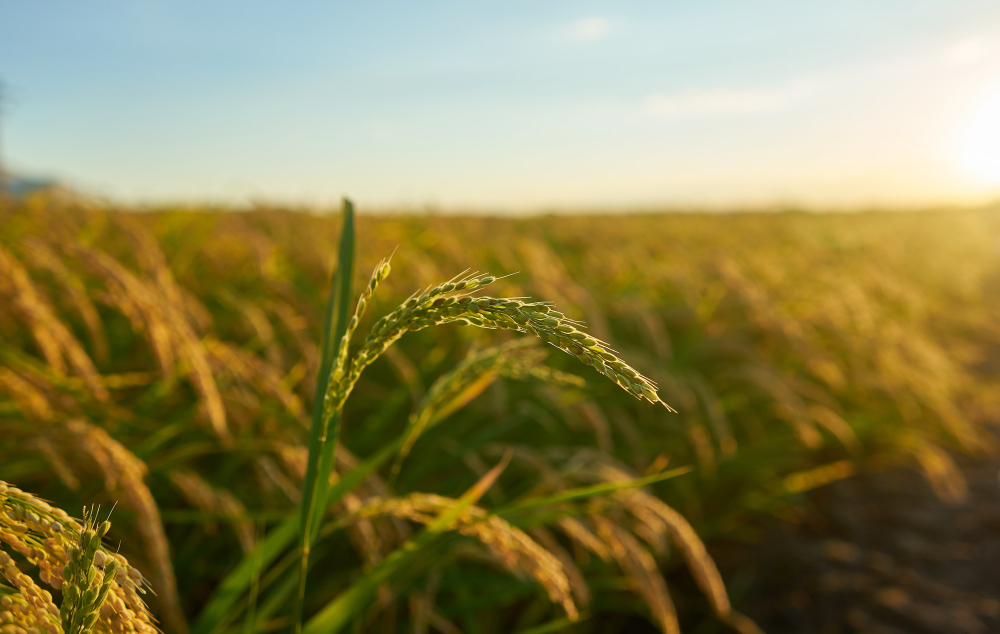The outlook for crop production and prices is influenced by a multitude of economic factors, with trade policies and market dynamics playing pivotal roles. Understanding these influences is crucial for stakeholders in agriculture, from farmers to policymakers, as they navigate the complexities of global and local markets. This article delves into how trade policies and market dynamics impact crop outlook, with a focus on the interconnectedness of these factors and their implications for crop health monitoring and agricultural sustainability.
Trade Policies and Their Impact on Crop Outlook
Trade policies, encompassing tariffs, trade agreements, subsidies, and export restrictions, significantly affect the global agricultural landscape. These policies shape the flow of agricultural commodities across borders, influencing prices, supply chains, and ultimately the outlook for crop production.
Tariffs and Trade Barriers
Tariffs and trade barriers can have profound effects on crop outlook by altering the competitive landscape for agricultural products. High tariffs on imported goods can protect domestic producers from foreign competition, potentially encouraging local crop production. However, they can also lead to higher prices for consumers and retaliatory measures from trade partners, disrupting international markets.
– Example: The US-China trade war saw significant tariffs imposed on soybeans, leading to shifts in global trade patterns. American farmers faced reduced access to the Chinese market, one of the largest importers of soybeans, causing a surplus and price drops domestically. In contrast, countries like Brazil capitalized on this gap, increasing their soybean exports to China.
Trade Agreements
Trade agreements, such as the North American Free Trade Agreement (NAFTA) and its successor, the United States-Mexico-Canada Agreement (USMCA), facilitate the smooth flow of agricultural products between member countries by reducing or eliminating tariffs and trade barriers. These agreements can enhance market access for farmers, stabilize prices, and provide a more predictable environment for agricultural planning.
– Example: NAFTA significantly boosted agricultural trade between the US, Canada, and Mexico, benefiting American corn and soybean farmers by providing access to these key markets. The agreement helped stabilize prices and ensured a steady demand for crops.
Subsidies and Support Programs
Government subsidies and support programs are crucial for stabilizing crop production and ensuring farmers’ financial viability. These policies can influence planting decisions, crop diversity, and market dynamics.
– Example: In the European Union, the Common Agricultural Policy (CAP) provides substantial subsidies to farmers, encouraging production stability and crop diversity. These subsidies help farmers manage risks associated with price volatility and crop failures, contributing to a more stable crop outlook.
Export Restrictions
Export restrictions, such as bans or quotas, can be implemented to ensure domestic food security during times of scarcity. While these measures can stabilize local markets, they often disrupt global supply chains, leading to price volatility and uncertainty.
– Example: During the 2008 food crisis, several countries, including India and Vietnam, imposed rice export bans to secure domestic supply. These restrictions led to a surge in global rice prices, affecting food security in importing countries.
Market Dynamics and Their Influence on Crop Outlook
Market dynamics, including supply and demand fluctuations, price volatility, and market speculation, are critical in shaping crop outlook. These factors interact with trade policies to create a complex web of influences on agricultural production and pricing.
Supply and Demand Fluctuations
Supply and demand are fundamental drivers of crop prices and outlook. Factors such as weather conditions, technological advancements, and shifts in consumer preferences can cause significant fluctuations.
– Weather Conditions: Adverse weather conditions, such as droughts or floods, can reduce crop yields, leading to supply shortages and higher prices. Conversely, favorable weather can boost production, leading to surpluses and price drops.
– Technological Advancements: Innovations in crop health monitoring, precision agriculture, and biotechnology can enhance crop yields and quality, impacting supply levels and market prices. For instance, improved crop health monitoring technologies enable farmers to detect and address pest infestations and diseases early, preventing significant yield losses and stabilizing supply.
– Consumer Preferences: Changes in consumer preferences, such as the growing demand for organic and sustainably produced foods, can shift market dynamics. Farmers may need to adapt their production methods and crop choices to meet these demands, affecting supply and pricing.
Price Volatility
Price volatility is a common challenge in agricultural markets, influenced by both external and internal factors. High price volatility can create uncertainty for farmers, impacting their planning and investment decisions.
– External Factors: Global economic conditions, geopolitical tensions, and currency fluctuations can contribute to price volatility. For example, a strong US dollar can make American agricultural exports more expensive, reducing demand and leading to price drops.
– Internal Factors: Domestic issues such as labor shortages, changes in input costs (e.g., fertilizers, fuel), and policy shifts can also cause price fluctuations. Farmers must navigate these uncertainties to maintain profitability and ensure a stable crop outlook.
Market Speculation
Speculation in agricultural markets can amplify price movements and contribute to volatility. Speculators, including hedge funds and other financial entities, often trade agricultural commodities based on anticipated price movements rather than actual supply and demand fundamentals.
– Impact on Prices: Speculative trading can lead to rapid price increases or decreases, affecting farmers’ revenue and planning. While speculation can provide liquidity and price discovery benefits, excessive speculation can distort market signals and create instability.
– Risk Management: Farmers can use tools such as futures contracts and crop insurance to manage the risks associated with price volatility. These instruments help stabilize income and provide a more predictable financial outlook.
Integrating Crop Health Monitoring for Improved Crop Outlook
Crop health monitoring is an essential component in managing the economic factors affecting crop outlook. Advanced monitoring technologies, such as remote sensing, drones, and IoT-based sensors, provide real-time data on crop conditions, enabling farmers to make informed decisions and optimize production.
Early Detection and Intervention
Effective crop health monitoring allows for early detection of pests, diseases, and nutrient deficiencies. By addressing these issues promptly, farmers can prevent significant yield losses and maintain a stable supply, contributing to more predictable market dynamics.
– Example: Drones equipped with multispectral cameras can scan large fields, detecting stress signs in crops that are not visible to the naked eye. Early intervention based on this data can mitigate damage and ensure consistent crop quality and yield.
Precision Agriculture
Precision agriculture leverages crop health monitoring data to optimize input use, such as water, fertilizers, and pesticides. This targeted approach enhances efficiency, reduces costs, and minimizes environmental impact.
– Example: IoT-based soil moisture sensors provide precise data on irrigation needs, preventing over- or under-watering. This precision improves crop health and yields, contributing to a more reliable crop outlook.
Data-Driven Decision Making
Integrating crop health monitoring with data analytics enables farmers to make data-driven decisions regarding planting schedules, crop rotation, and resource allocation. This approach enhances resilience to economic fluctuations and improves long-term crop outlook.
– Example: Machine learning algorithms can analyze historical crop health data and weather patterns to predict optimal planting times and identify high-risk periods for pest outbreaks. These insights help farmers plan proactively, reducing risks and enhancing productivity.
Conclusion
Trade policies and market dynamics are critical economic factors that shape the crop outlook. Tariffs, trade agreements, subsidies, and export restrictions influence global agricultural markets, impacting prices, supply chains, and farmer decisions. Market dynamics, including supply and demand fluctuations, price volatility, and speculation, further complicate the agricultural landscape. Integrating advanced crop health monitoring technologies can mitigate some of these challenges by providing real-time data and enabling proactive management. Early detection of issues, precision agriculture, and data-driven decision-making improve crop resilience and productivity, contributing to a more stable and positive crop outlook.
Governments, policymakers, and agricultural stakeholders must work together to navigate these economic factors, leveraging innovative technologies and supportive policies to ensure sustainable and profitable agricultural systems. By understanding and addressing the complexities of trade policies and market dynamics, the agricultural sector can achieve a more predictable and optimistic future.










